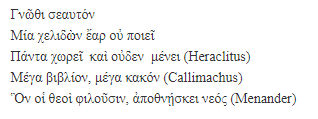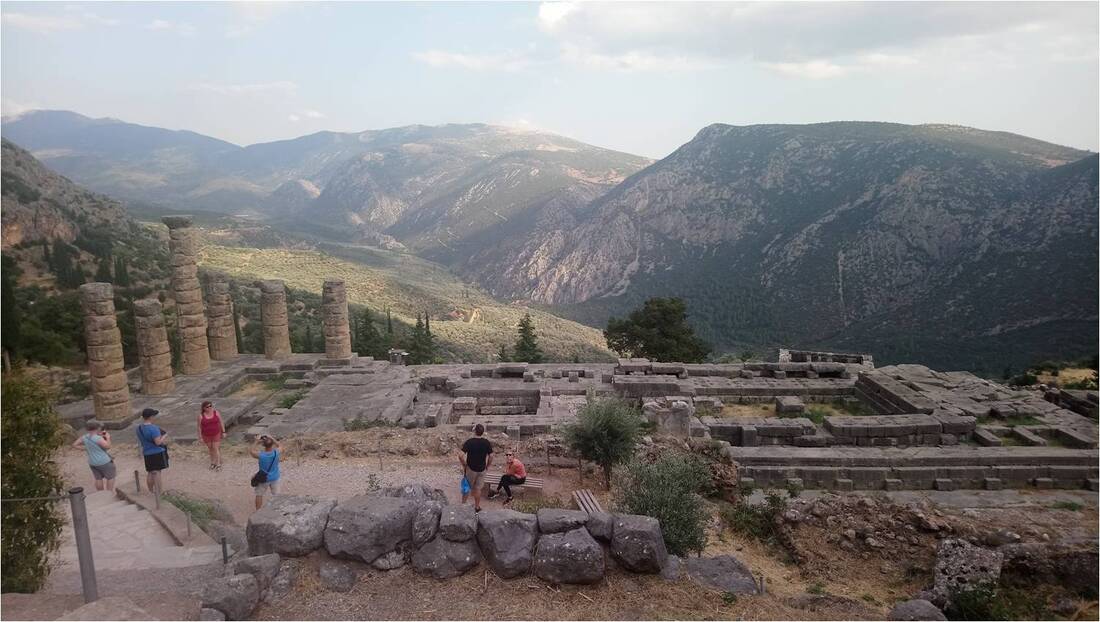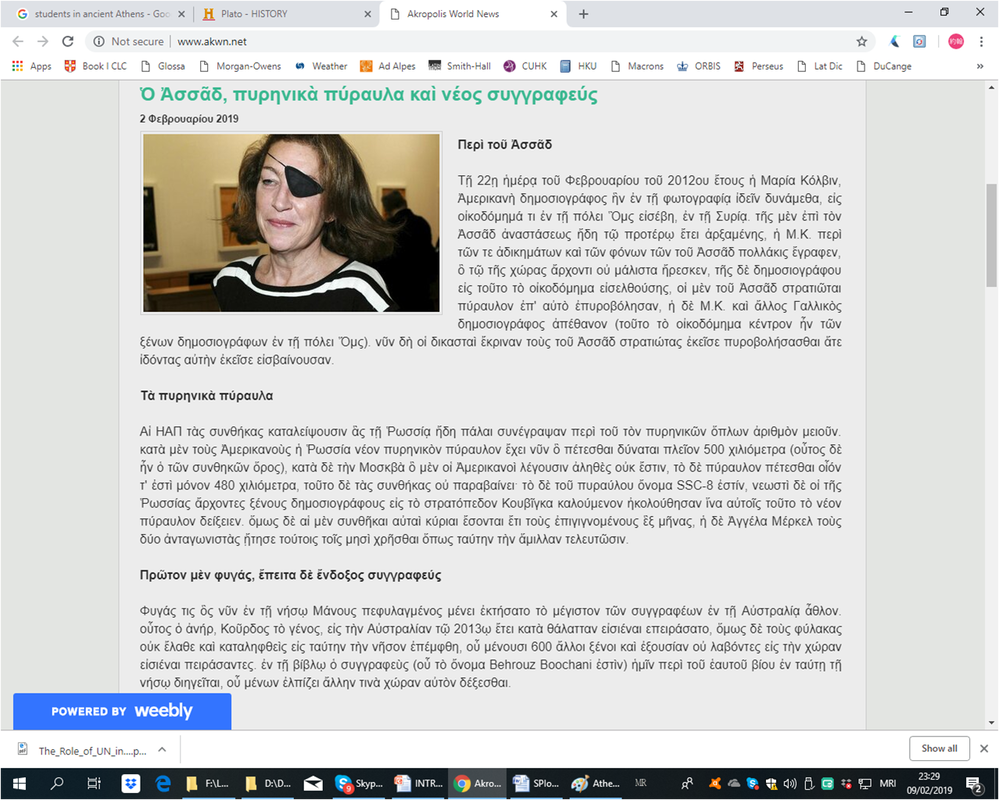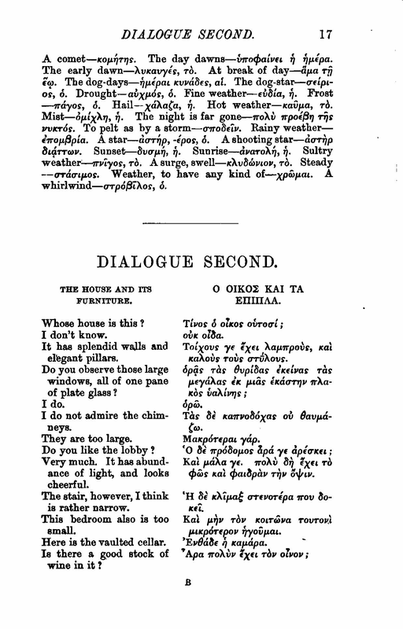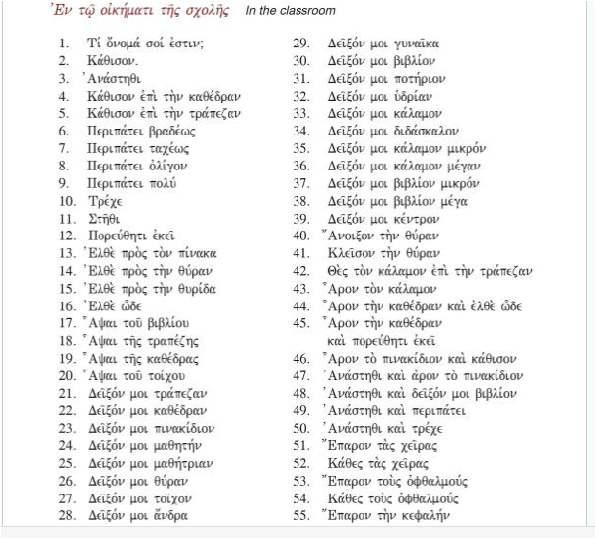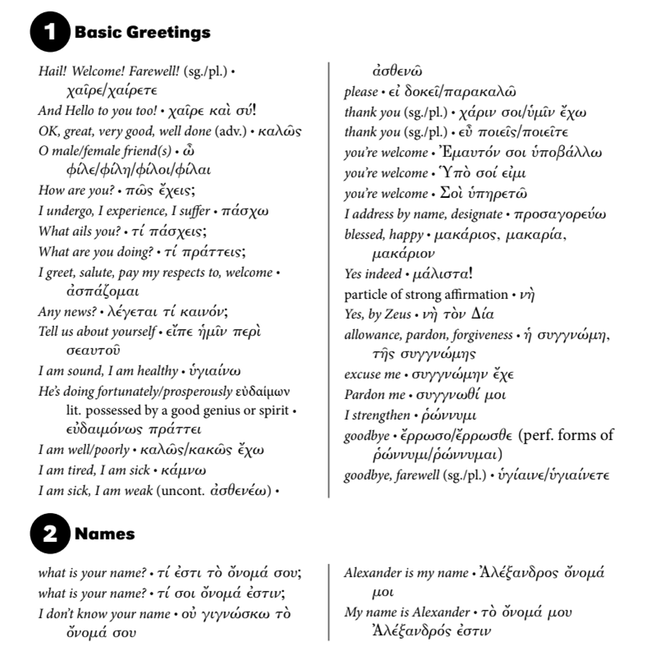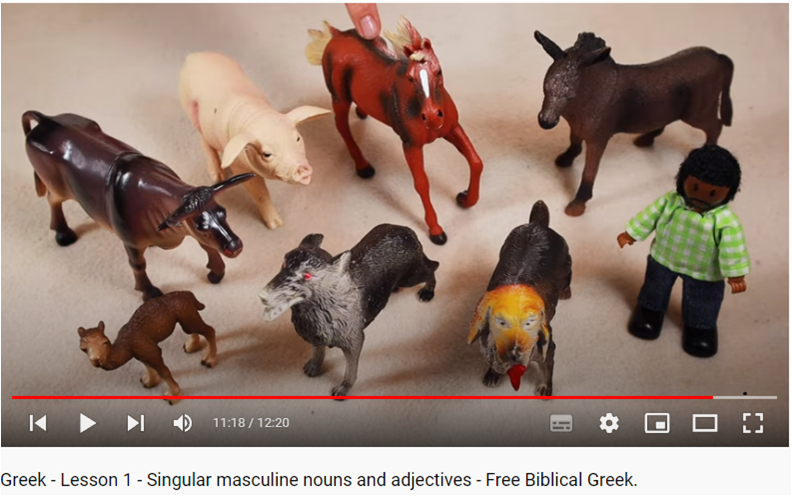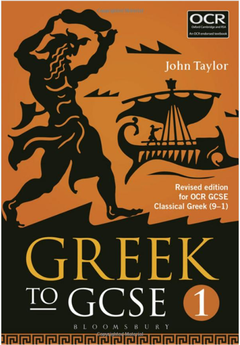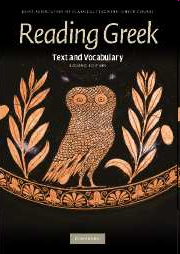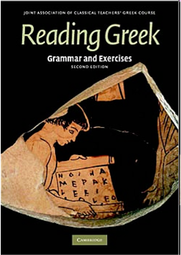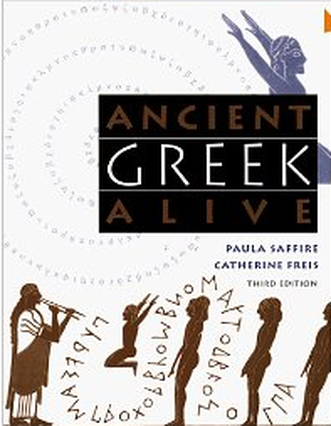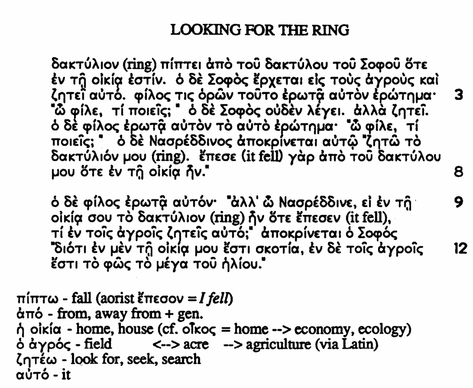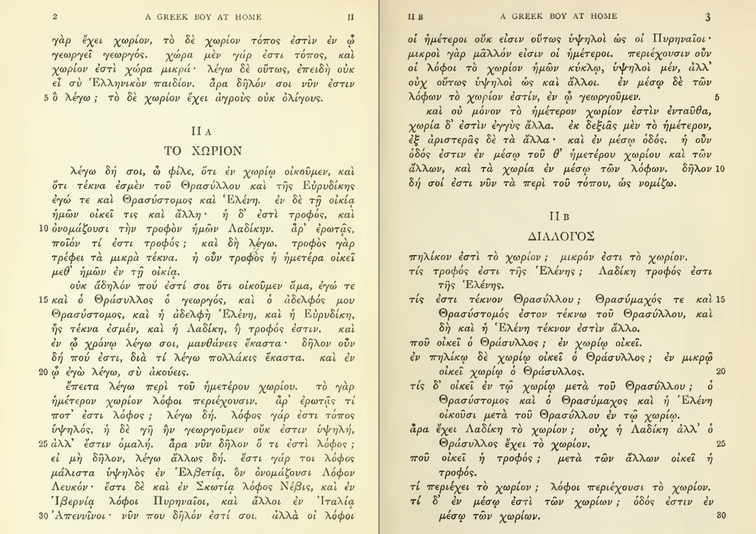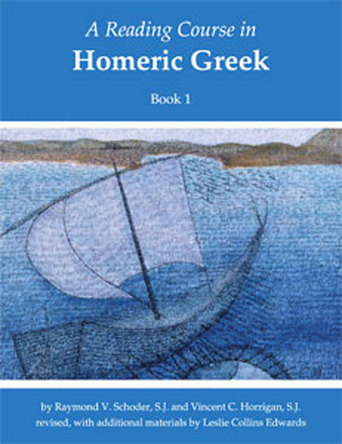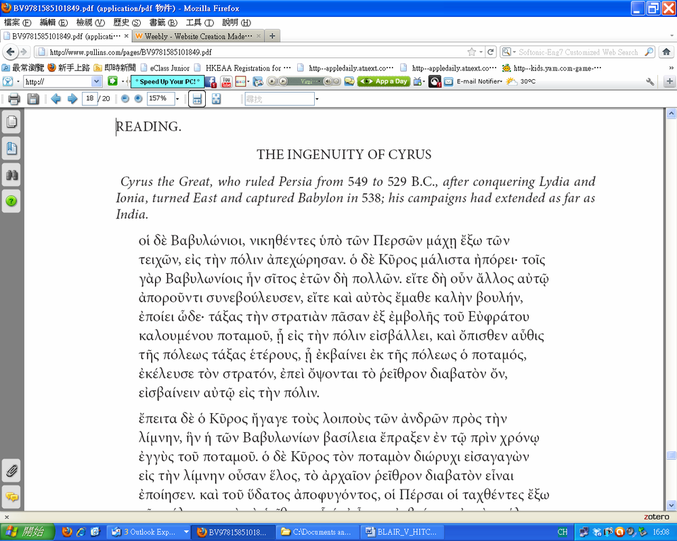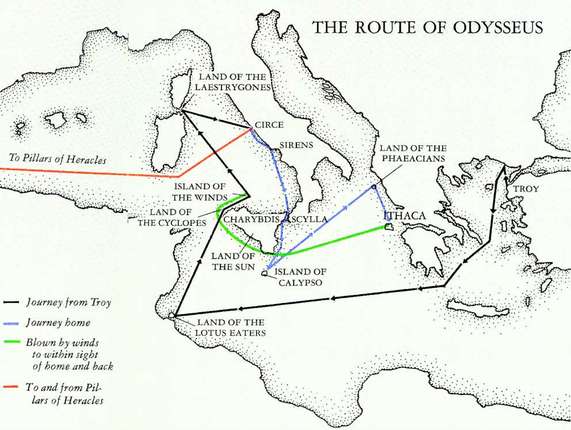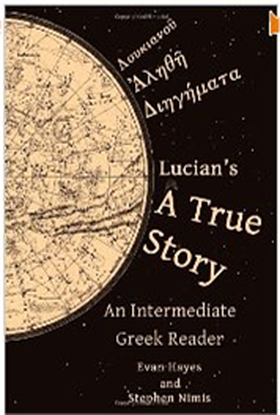| linguae |
|
- HOME
-
LATIN & GREEK
-
CIRCULUS LATINUS HONCONGENSIS
>
- ORATIO HARVARDIANA 2007
- NOMEN A SOLEMNIBUS
- CARMINA MEDIAEVALIA
- BACCHIDES
- LATIN & ANCIENT GREEK SPEECH ENGINES
- MARCUS AURELIUS
- ANGELA LEGIONEM INSPICIT
- REGINA ET LEGATUS
- HYACINTHUS
- LATINITAS PONTIFICALIS
- SINA LATINA >
- MONUMENTA CALEDONICA
- HISTORIA HONCONGENSIS
- ARCADIUS AVELLANUS
- LONDINIUM
- ROMAN CALENDAR
- SOMNIUM
- CIRCULUS VOCABULARY
- HESIOD
- CONVENTUS FEBRUARIUS (I)
- CONVENTUS FEBRUARIUS (II)
- CONVENTUS MARTIUS
- CONVENTUS APR 2018
- CONVENTUS APRILIS
- CONVENTUS MAIUS
- CONVENTUS IUNIUS
- CONVENTUS IULIUS
- CONVENTUS SEPT 2017
- CONVENTUS OCT 2017
- CONVENTUS NOV 2017
- CONVENTUS DEC 2017
- CONVENTUS DEC 2017 (II)
- CONVENTUS JAN 2018
- CONVENTUS FEB 2018
- CONVENTUS MAR 2018
- CONVENTUS MAIUS 2018
- CONVENTUS IUN 2018
- CONVENTUS IUL 2018
- CONVENTUS SEPT 2018
- CONVENTUS OCT 2018
- CONVENTUS NOV 2018
- CONVENTUS DEC 2018
- CONVENTUS NATIVITATIS 2018
- CONVENTUS IAN 2019
- CONVENTUS FEB 2019
- CONVENTUS MAR 2019
- CONVENTUS APR 2019
- CONVENTUS MAIUS 2019
- CONVENTUS IUN 2019
- CONVENTUS IULIUS 2019
- CONVENTUS SEP 2019
- CONVENTUS OCT 2019
- CONVENTUS NOV 2019
- CONVENTUS DEC 2019
- CONVENTUS JAN 2020
- CONVENTUS FEB 2020
- CONVENTUS MAR 2020
- CONVENTUS APR 2020
- CONVENTUS IUL 2020
- CONVENTUS SEP 2020 (I)
- CONVENTUS SEPT 2020 (II)
- CONVENTUS OCT 2020
- CONVENTUS NOV 2020
- CONVENTUS IAN 2021
- CONVENTUS IUN 2021
- CONVENTUS IULIUS 2021
- CONVENTUS AUG 2021
- CONVENTUS SEPT 2021
- CONVENTUS OCT 2021
- CONVENTUS NOV 2021
- CONVENTUS FEB 2022 (1)
- CONVENTUS FEB 2022 (2)
- CONVENTUS MAR 2022
- CONVENTUS APRILIS 2022
- CONVENTUS MAIUS 2022
- CONVENTUS IUN 2022
- CONVENTUS IUL 2022
- CONVENTUS SEP 2022
- CONVENTUS OCT 2022
- CONVENTUS NOV 2022
- CONVENTUS DEC 2022
- CONVENTUS IAN 2023
- CONVENTUS FEB 2023
- CONVENTUS MARTIUS 2023
- CONVENTUS APRIL 2023
- CONVENTUS MAIUS 2023
- CONVENTUS IUN 2023
- CONVENTUS IUL 2023
- CONVENTUS SEP 2023
- CONVENTUS OCT 2023
- CONVENTUS IAN 2024
- CONVENTUS MARTIUS (I) 2024
- RES GRAECAE >
-
IN CONCLAVI SCHOLARI
>
- LATIN I
- LATIN I (CAMBRIDGE)
- LATIN II (CAMBRIDGE)
- LATIN II (MON)
- LATIN II (SAT)
- LATIN III (MON)
- LATIN III (SAT)
- LATIN IV
- LATIN TEENAGERS I
- LATIN TEENAGERS II
- LATIN TEENAGERS III
- LATIN TEENAGERS IV
- LATIN TEENAGERS V
- LATIN TEENAGERS VI
- LATIN TEENAGERS VII
- LATIN TEENAGERS VIII
- LATIN TEENAGERS IX
- LATIN TEENAGERS X
- LATIN TEENAGERS XI
- LATIN SPACE I
- LATIN SPACE II
- LATIN SPACE III
- LATIN SPACE IV
- CARPE DIEM
- INITIUM ET FINIS BELLI
- EPISTULA DE EXPEDITIONE MONTANA
- DE LATINE DICENDI NORMIS >
- ANECDOTA VARIA
- RES HILARES
- CARMINA SACRA
- CORVUS CORAX
- SEGEDUNUM
- VIDES UT ALTA STET NIVE
- USING NUNTII LATINI
- FLASHCARDS
- CARMINA NATIVITATIS
- CONVENTUS LATINITATIS VIVAE >
- CAESAR
- SUETONIUS
- BIBLIA SACRA
- EUTROPIUS
- CICERO
- TACITUS
- AFTER THE BASICS
- AD ALPES
- LIVY
- PLINY
- OVID
- AENEID IV
- AENEID I
- QUAE LATINITAS SIT MODERNA
-
CIRCULUS LATINUS HONCONGENSIS
>
-
NEPALI
- CORRECTIONS TO 'A HISTORY OF NEPAL'
- GLOBAL NEPALIS
- NEPALESE DEMOCRACY
- CHANGE FUSION
- BRIAN HODGSON
- KUSUNDA
- JANG BAHADUR IN EUROPE
- ANCESTORS OF JANG
- SINGHA SHAMSHER
- RAMESH SHRESTHA
- RAMESH SHRESTHA (NEPALI)
- NEPALIS IN HONG KONG
- VSO REMINISCENCES
- BIRGUNJ IMPRESSIONS
- MADHUSUDAN THAKUR
- REVOLUTION IN NEPAL
- NEPAL 1964-2014
- BEING NEPALI
- EARTHQUAKE INTERVIEW
- ARCHIVES IN NEPAL
- FROM THE BEGINNING
- LIMITS OF NATIONALISM
- REST IS HISTORY FOR JOHN WHELPTON
- LIMPIYADHURA AND LIPU LEKH
- BHIMSEN THAPA AWARD LECTURE
- HISTORICAL FICTION
- READING GUIDE TO NEPALESE HISTORY
- LANGUAGES OF THE HIMALAYAS
- REVIEW OF LAWOTI (2007)
- ROMANCE LANGUAGES
-
English
- VIETNAM REFLECTIONS
- GRAMMAR POWERPOINTS
- PHONETICS POWERPOINTS
- MAY IT BE
- VILLAGE IN A MILLION
- ENGLISH RHETORIC
- BALTIC MATTERS
- SHORT STORIES QUESTIONS
- WORD PLAY
- SCOTS
- INTERNATIONAL SCHOOLS
- STORY OF NOTTINGHAM
- MEET ME BY THE LIONS
- MNEMONICS
- ALTITUDE
- KREMLIN'S SUICIDAL IMPERIALISM
- CLASSROOM BATTLEFIELD
- MATHEMATICS AND HISTORICAL LINGUISTICS
- OLD TESTAMENT INJUNCTIONS
- KUIRE ORIGINS
- BALTI
- CUBA
- JINNAH AND MODERN PAKISTAN
- ENGLISH IS NOT NORMAL
- HKAS
Praecepta
The first two of the sayings above were collected by Miriam Schüttler and others are taken from Athenaze (see below). If anyone would like to offer additions they can send email them to me here.
ΟΥΔΕΙΣ ΓΡΑΜΜΑΤΙΚΩΝ ΔΥΝΑΤΑΙ ΠΟΤΕ ΟΛΒΙΟΣ ΕΙΝΑΙ (Anthologia Graeca XI 279 - cited (not very seriously!) by Thomas Coloniensis)
ΟΥΔΕΙΣ ΓΡΑΜΜΑΤΙΚΩΝ ΔΥΝΑΤΑΙ ΠΟΤΕ ΟΛΒΙΟΣ ΕΙΝΑΙ (Anthologia Graeca XI 279 - cited (not very seriously!) by Thomas Coloniensis)
The Temple of Apollo at Delphi (August 2019)
The PowerPoint below provides an introduction to the history of the Greek language and its writing system:
The PowerPoint below provides an introduction to the history of the Greek language and its writing system:
| introducing_greek.ppt | |
| File Size: | 6809 kb |
| File Type: | ppt |
Apart from GREEK SUBJUNCTIVE, which is meant to provide a complete overview, the other presentations below are mainly geared to the requirements of the American Classical League's National Greek Exam. GREEK NOUNS covers all the main patterns, while GREEK VERBS IΝ Ω includes all indicative tenses, except the pluperfect and future perfect, of λύω and of contact verbs in -ε and -α, GREEK PARTIPLES the present active and medio-passive particples of the same verbs, GREEK ADJECTIVES AND ADVERBS the forms of καλός, -ή, -όν, μέγας, -μεγάλη, μέγα, πολύς, πολλή, πολύ, σώφρων, ἀληθής and ταχύς, together with comparatives and superlatives, GREEK ARTICLE AND PRONOUNS the definite article, the relative pronoun, ἐγώ, σύ, αὐτός/ἑαυτός, τίς / τις, οὗτος and ὅδε, GREEK IRREGULAR VERBS the main forms of εἰμί , εἶμι, οἶδα and φημί, GREEK VERBS IN -μι the verbs δείκνυμι and δίδωμι and REPORTED SPEECH IN GREEK the main features of indirect statements and indirect questions
|
| ||||||||||||||||||||||||||||||||||||||||||||||||||||||||||
Useful links
Four very useful resources for the basics are:
There is a digital version on the Daedalus site of White's First Greek Book, an 1896 textbook which goes rapidly through the grammar with accompanying reading practice from Xenophon's Anabasis. A very good resource but, many errors crept in during digitalisation so beginners need guidance from a teacher to use it safely, In addition, on some computers grave accents (common at the end of words) are displayed to the right of rather than above vowels. The book is also available as a download in verious formats from the Internet Archive. but Daedalus is
still useful for the very thorough interactive drills provided at the end of each chapter, and rthe site designer, Professor Jeff Rydberg-Cox, hopes later to add a feature allowing users to feed in corrections.
For classical Greek Mastronarde's Ancient Greek Tutorials covers alphabet and pronunciation (with sound files added but these were not working when accessed in February 2019), accentuation and the main grammatical paradigms, including both tables and drills.
The Institute of Biblical Greek, which, while focusing on the language of the New Testament, also includes details of
the pronunciation used by most students of the classical language, as well as that of modern Greek (for a Greek
scholar's quick demonstration of how we know the modern pronunciation was very different from the modern, see the `Greek Alphabet' site ). The Institute provide clear grammatical charts of their own plus multiple links to other sites
on the same topic. There are also details of their own on-line course, which uses Athenaze (see below) as textbook.
The JACT Summer School site has a collection of short video lectures and PDFs on various grammatical topics at both
beginner and intermediate levels.
There are links to many other resources on the Greek Language and Linguistics site and, for those who read German, Gerhard Salomon's 1933 course has been made available on-line by E. Gottwein. This course is rather old-fashioned in approach but well set out and with a large number of sentences and passages presented both in Greek and in German translation. Also available in German is guidance on writing Greek letters in electronic formats on Thomas Ihnken's site..
Most of the standard ancient texts are available both on the Perseus site and in the Bibliotheca Augustana, which, whilst not providing the hyper-linked help offered on Perseus, has a much more attractive typeface. Compared with Latin, there is relatively little contemporary writing in classical Greek but Acropolis World News, run by Catalan scholar Juan Coderch from St. Andrew's University in Scotland, provides news bulletins in the language on similar lines to Finnish Radio's Nuntii Latini, though without any recordings. His site also has a short list of suggested translations for modern concepts, whilst Woodhouse's English-Classical Greek dictionary (restricted to words and phrases attested in ancient authors) is also available on-line.
Coderch has also produced a comprehensive Greek grammar which can be downloaded from his site as a PDF file or purchased on Amazon.
For typing ancient Greek a special font is required as modern Greek lacks some of the diacritics conventionally used for the older language. A used-friendly system is provided by Keyman's `Greek Classical' and details (including a link to download the font) are available here. Both Greek Classical and other Keyman fonts for ancient Greek are also available from the Classical Greek Keyboards page.
There is a digital version on the Daedalus site of White's First Greek Book, an 1896 textbook which goes rapidly through the grammar with accompanying reading practice from Xenophon's Anabasis. A very good resource but, many errors crept in during digitalisation so beginners need guidance from a teacher to use it safely, In addition, on some computers grave accents (common at the end of words) are displayed to the right of rather than above vowels. The book is also available as a download in verious formats from the Internet Archive. but Daedalus is
still useful for the very thorough interactive drills provided at the end of each chapter, and rthe site designer, Professor Jeff Rydberg-Cox, hopes later to add a feature allowing users to feed in corrections.
For classical Greek Mastronarde's Ancient Greek Tutorials covers alphabet and pronunciation (with sound files added but these were not working when accessed in February 2019), accentuation and the main grammatical paradigms, including both tables and drills.
The Institute of Biblical Greek, which, while focusing on the language of the New Testament, also includes details of
the pronunciation used by most students of the classical language, as well as that of modern Greek (for a Greek
scholar's quick demonstration of how we know the modern pronunciation was very different from the modern, see the `Greek Alphabet' site ). The Institute provide clear grammatical charts of their own plus multiple links to other sites
on the same topic. There are also details of their own on-line course, which uses Athenaze (see below) as textbook.
The JACT Summer School site has a collection of short video lectures and PDFs on various grammatical topics at both
beginner and intermediate levels.
There are links to many other resources on the Greek Language and Linguistics site and, for those who read German, Gerhard Salomon's 1933 course has been made available on-line by E. Gottwein. This course is rather old-fashioned in approach but well set out and with a large number of sentences and passages presented both in Greek and in German translation. Also available in German is guidance on writing Greek letters in electronic formats on Thomas Ihnken's site..
Most of the standard ancient texts are available both on the Perseus site and in the Bibliotheca Augustana, which, whilst not providing the hyper-linked help offered on Perseus, has a much more attractive typeface. Compared with Latin, there is relatively little contemporary writing in classical Greek but Acropolis World News, run by Catalan scholar Juan Coderch from St. Andrew's University in Scotland, provides news bulletins in the language on similar lines to Finnish Radio's Nuntii Latini, though without any recordings. His site also has a short list of suggested translations for modern concepts, whilst Woodhouse's English-Classical Greek dictionary (restricted to words and phrases attested in ancient authors) is also available on-line.
Coderch has also produced a comprehensive Greek grammar which can be downloaded from his site as a PDF file or purchased on Amazon.
For typing ancient Greek a special font is required as modern Greek lacks some of the diacritics conventionally used for the older language. A used-friendly system is provided by Keyman's `Greek Classical' and details (including a link to download the font) are available here. Both Greek Classical and other Keyman fonts for ancient Greek are also available from the Classical Greek Keyboards page.
A good overview of ancient Greek culture and its relationship to the modern world is provided by Cambridge professor Paul Cartledge in a November 2010 article in the Guardian newspaper.
There is conversational material in the books by W. H. D. Rouse and Anne Mahoney discussed in the `Introductory courses' section below. A phrasebook for ancient Greek has been uploaded by Louis Sorenson and others. This is based on the 1902 2nd. edition of a German-Attic phrasebook, to a large part of which English has now been added. the project appears to be in abeyance at the moment but about 60 pages were completed and are available on web.archive.org. The first few phrases are given below:
There is conversational material in the books by W. H. D. Rouse and Anne Mahoney discussed in the `Introductory courses' section below. A phrasebook for ancient Greek has been uploaded by Louis Sorenson and others. This is based on the 1902 2nd. edition of a German-Attic phrasebook, to a large part of which English has now been added. the project appears to be in abeyance at the moment but about 60 pages were completed and are available on web.archive.org. The first few phrases are given below:
|
Ah, Guten Tag! Guten Morgen, Karl! Guten Morgen, Gustav! (Erwiderung).
Seien Sie mir schön willkommen! Ah! freue mich außerordentlich! Freue mich außerordentlich, Herr Müller! Ganz auf meiner Seite! |
Well, Hello there! Good morning, Charles! Good morning, Gustav!
(in response) I’m delighted to see you! Well, I welcome you heartily! I welcome you warmly, Mr. Miller! The pleasure’s all mine! |
ὦ χαῖρε!
χαῖρ’ ὦ Κάρολε! καὶ σύγε, ὦ Γούσταβε! ὦ χαῖρε, φίλτατε! ἀσπάζομαι! Μύλλερον ἀσπάζομαι! κἄγωγέ σε! |
Another aid to conversation, published in 1871 and written by a Scottish university professor, John Blackie, can be read on the Archive.org site and also downloaded in various formats (the pdf version is provided by Google books and not available to users in Hong Kong).
There is now a direct method. conversation-based beginner's course by Christophe Rico, Polis: Speaking Ancient Greek as a Living Language, focussed on Koine rather than Cssical Greek but using a pronunciation neare to Classical than to the modern language. The author can be watched on Youtube as he teaches the first section of the lesson from the course in a 50-minute video embedded here. the second part of the lesson is also on YouTube.
Question and commands for the first lesson in Polis: Speaking Ancient Greek as a Living Language
There is further conversatiοnal material in the `Oral Scripts' section of the Ariadne site (see below) and in `Bill's Conversational Ancient Greek Cheat Sheet', a 29-page Google drive download.
There is further conversatiοnal material in the `Oral Scripts' section of the Ariadne site (see below) and in `Bill's Conversational Ancient Greek Cheat Sheet', a 29-page Google drive download.
`Conversational Ancient Greek Cheat Sheet'
You can hear a number of basic phrases in a interesting video by Luke Ranieri, who gives the first lesson in Mario Diaz Avila's Alexandros: to Hellenikon Paidion (see below) with Latin as the medium of instruction
You can hear a number of basic phrases in a interesting video by Luke Ranieri, who gives the first lesson in Mario Diaz Avila's Alexandros: to Hellenikon Paidion (see below) with Latin as the medium of instruction
Luke Ranieri is also building up a series of comprehensible input videos for beginners in Greek without the use of any other language. These include a description of the Roman Empire, modeled on the first cvhapter of Orberg's Lingua Romana Per Se Ilustrata:
Seumas Macdonald is also currently (January 2021) producing a direct method course inspired by Orberg and entitled Lingua Graeca Per Se Illustrata, which can be read on-line or downloaded as a series of PDFs
There is also a series of free vidoea, `Alpha with Angela', introducing Biblicalk Greek by direct method. The picture below is from the first lesson which introduces the names of some common animals and simple question formulae, such as τί ἐστι τοῦτο? (what is this?)
There is also a series of free vidoea, `Alpha with Angela', introducing Biblicalk Greek by direct method. The picture below is from the first lesson which introduces the names of some common animals and simple question formulae, such as τί ἐστι τοῦτο? (what is this?)
For texting in ancient Greek,, there are now (May 2020) two Whatsapp groups: ΔΙΑΛΟΓΟΙ ΑΤΤΙΚΟΙ and Λαλητήριον Ἑλληνικόν. For spoken conversation in real time, the Latin and Greek Chats site has details of the sessions on Zoom held three times a week.
Greek pronunciation
Although modern Greek is much closer to the ancient language than modern English is to Old English, there have been major shifts in pronunciation. In Greece itself, it is customary to read the ancient texts with modern pronunciation whilst elswhere students are taught to make the sounds of the ancient language as scholars have been able to reconstruct them. The evidence for the older system includes the use in a fifth century B.C. drama of the onomatopoeic phrase βη βη for the sound made by a sheep. This would be read as `vī vī' on the modern Greek system, but as the much more plausible `bē bē' on the reconstructed one. Other evidence is presented in detail in Sydney Allen's Vox Graeca and the timing of subsequent changes discussed in David Horrocks' Greek: a History of the Language and its Speakers. The speech of writers of the New Testament (1st/2nd. cent. A.D.) probably already incorporated some of the featurs of modern Greek (e.g. the fricative proununciation of β, θ, χ and φ ) but by no means all.
Ancient Greek had a pitch accent whose exact nature is still disputed by scholars but which by the early centuries A.D. had turned into the stress accent which modern Greek retains on the same syllables. Luke Ranieri makes an interesting attempt to recreate the original pitch system in his Athenaze recording (the second YouTube video embedded below). Sean Gabbs of Guildhall University provides a useful survey of the different ways in which the accentuation markings introduced in the Hellenistic period and still retained in modern printed texts are pronounced - or not pronounced - by classicists today (see download at the bottom of the page). Students in Holland, the UK and Commonwealth countries, if given any guidance on the topic, have traditionally been told to stress Greek words as if they were Latin ones (!) whilst in the USA and many other countries the stress is put on syllables bearing an acute or circumflex accent. For a robust defence of the latter method, which is both more authentic and facilitates the leaning of modern Greek also, see Vox Graeca.
Here are the opening lines of Homer's Odyssey read by a Greek native speaker but in the ancient style, with a rather less prominent pitch accent than Ranieri's:
Ancient Greek had a pitch accent whose exact nature is still disputed by scholars but which by the early centuries A.D. had turned into the stress accent which modern Greek retains on the same syllables. Luke Ranieri makes an interesting attempt to recreate the original pitch system in his Athenaze recording (the second YouTube video embedded below). Sean Gabbs of Guildhall University provides a useful survey of the different ways in which the accentuation markings introduced in the Hellenistic period and still retained in modern printed texts are pronounced - or not pronounced - by classicists today (see download at the bottom of the page). Students in Holland, the UK and Commonwealth countries, if given any guidance on the topic, have traditionally been told to stress Greek words as if they were Latin ones (!) whilst in the USA and many other countries the stress is put on syllables bearing an acute or circumflex accent. For a robust defence of the latter method, which is both more authentic and facilitates the leaning of modern Greek also, see Vox Graeca.
Here are the opening lines of Homer's Odyssey read by a Greek native speaker but in the ancient style, with a rather less prominent pitch accent than Ranieri's:
A longer extract (lines 1-48) can be heard here but only the Greek text, with no English translation, is provided and a recording of the whole of book 1 is available for purchase. A sung version of lines 1-10, with lyre accompaniment, Greek text and Spanish subtitles is available here.
Stanley Lombardo's recitation of the whole of Book 1 of the Iliad is also available on YouTube. In this recording he normall;y places the stress in line with the printed accents, unlike his earlier recitation of lines 62-107 of Book 23, where, though otherwise reading the text with sensitivity he generally stressed the first sylable of each foot.
Stanley Lombardo's recitation of the whole of Book 1 of the Iliad is also available on YouTube. In this recording he normall;y places the stress in line with the printed accents, unlike his earlier recitation of lines 62-107 of Book 23, where, though otherwise reading the text with sensitivity he generally stressed the first sylable of each foot.
Introductory courses
The best known beginners' course in the UK was formerly Athenaze, featuring the story of an Attic farmer and his family in the 5th century A. D. and with the emphasis on reading rather than rapid presentation of grammar. The latter is nevertheless treated thoroughly and, in contrast to many other courses, the learner is expected to master from the start the system of accents developed in the Hellenistic period and still normally used in modern editions of the ancient Greek texts. The Teacher's Handbook for Book I and for Book II (1st edition?) can be read on-line or downloaded to your computer. `Ariadne: resources for Athenaze', a collection of pages on the Cornell College site, includes background information and suggestions for activities, including scripts for oral practice, as well as recordings of the vocabulary - up to chapter 12 in June 2011. To read the Greek on this site is is necessary to install the SPIonic font, which can be downloaded from here The font site also provides a keyboard map for anyone wishing to type as well as read Greek. The 3rd edition of the textbook is supported on OUP's website, where`Student Resources', including flashcards and suplementary grammar exercises, can be accessed freely but the instructors' section requires prior registration, normally with proof of teacher status.
The reading passages in Athenaze can be sampled from the Italian edition on the Viarium Novum site. The Italian version ha been modified to make the presentation more similar to that in Orberg's direct method Lingua Latina per se Illustrata, with key vocabulary and phrseas often explained by pictures and diagrams in the margins. There are also some additional reading materials This edition, however, does however use Italian for grammatical explanations and translation exercises. The entire text of Book I can be downloaded from the Scribd site, The passages in chapters one and two have been recorded and uploaded to YouTube by American polymath Luke Ranieri (`ScorpioMartianus') who attempts to recreate the original pitch accent of ancient Greek (see also below).
The reading passages in Athenaze can be sampled from the Italian edition on the Viarium Novum site. The Italian version ha been modified to make the presentation more similar to that in Orberg's direct method Lingua Latina per se Illustrata, with key vocabulary and phrseas often explained by pictures and diagrams in the margins. There are also some additional reading materials This edition, however, does however use Italian for grammatical explanations and translation exercises. The entire text of Book I can be downloaded from the Scribd site, The passages in chapters one and two have been recorded and uploaded to YouTube by American polymath Luke Ranieri (`ScorpioMartianus') who attempts to recreate the original pitch accent of ancient Greek (see also below).
Perhaps unortunately, Athenaze has now (2019) been supplanted as the most commonly used textbook in Britain by John Taylor's Greek to GCSE , which is specifically geared to the OCR Classical Greek GCSE curriculum introduced in 2016 and focussed on direct learning of the grammar and vocabulary required for the exam rather than on extensive reading. Although students are told in the middle of the book that they can chose whether to stress Greek words according to the printed accents or to the Latinate system traditional in the UK, the accents themselves are not shown from the start. An answer key is available on-line after registration on the publisher(Bloomsbury)'s website. Flashcards for the vocabulary in each chapterare being linked to the Flashcards page on my site.
Another course book well established in the UK but also available on the American Amazon site is the Joint Association of Classical Teachers' Reading Greek, which is intended for learners in the upper forms of schools or in universities as well as for independent adult learners. The student has to use both the Text and Vocabulary and the Grammar and Exercises volumes and, if working alone, will also require the Independent Study Guide.
Ancient Greek Alive starts with lessons introducing both the Greek alphabet and simple dialogues, with the teacher, for example, getting students to ask each other's names in Greek. Subsequent lessons use reading passages drawn from folk tales around the world, as well as covering the basic grammar and emphasising vocabulary review. An extensive preview is available on Amazon and a comprehensive account in the Bryn Mawr Classical Review.
Here is one of the stories reproduced from the downloadable sample on Paula Saffire's own website:
Another introductory course, relying on a reading approach but also covering all the basic grammar, is C. Peckett and A.D. Munday's Thrasymachus: Greek through Reading (not to be confused with Rouse's reader, discussed below, whose central character is also called Thrasymachus!). Because this textbook, written in the 1960s, assumes a familiarity with Latin and the basic categories of an inflected language which many beginners in Greek now lack, school teachers, Alison Barker and Ann Thomas Wilkins, have provided additional explanations on a companion website, `Greek with Thrasymachus'. Their approach is outlined in an article in the 2001 issue of the on-line CALICO Journal
W.H.D. Rouse wrote a beginners' reader, A Greek Boy at Home, which can be freely downloaded from the Internet (see sample pages below) and is narrated in the person of a a Greek boy, Thrasymachus, living on a farm with his parents. brother, sister and nurse. The book, published in 1909, includes dialogues easily adaptable as comprehension exercises and intended to promote active use of the language by both teacher and students. The reader was meant to be used together with the author's First Greek Course (also downloadable as a pdf but with the text on its side and so only easily readable if printed out). The vocabulary for the reader is given in a second volume which can also be downloaded.
Anne Mahoney has recently (February 2011) brought out a substantially revised edition of First Greek Course adapted for college courses (extracts viewable on the Focus site), and also a slightly modified version of the reader, with both passages and vocabulary in a single volume - Rouse's Greek Boy (2010) . There is an online review of the re-issued reader in the Bryn Mawr Classical Review.
W.H.D. Rouse wrote a beginners' reader, A Greek Boy at Home, which can be freely downloaded from the Internet (see sample pages below) and is narrated in the person of a a Greek boy, Thrasymachus, living on a farm with his parents. brother, sister and nurse. The book, published in 1909, includes dialogues easily adaptable as comprehension exercises and intended to promote active use of the language by both teacher and students. The reader was meant to be used together with the author's First Greek Course (also downloadable as a pdf but with the text on its side and so only easily readable if printed out). The vocabulary for the reader is given in a second volume which can also be downloaded.
Anne Mahoney has recently (February 2011) brought out a substantially revised edition of First Greek Course adapted for college courses (extracts viewable on the Focus site), and also a slightly modified version of the reader, with both passages and vocabulary in a single volume - Rouse's Greek Boy (2010) . There is an online review of the re-issued reader in the Bryn Mawr Classical Review.
Some of the material in A Greek Boy at Home has been modified by Mario Diaz Avila to form a first-year course on its own, Alexandros: to Hellenikon Paidion, which, apart from an introduction in Spanish, is written entirely in ancient Greek. There is a detailed review of the book in the on-line journal, Teaching Classical Languages
Anne Mahoney has also brought out a revised edition of Francis Morice's Stories in Attic Greek, which was originally published in 1879 and intended to serve as a transitional reader for intermediate students who had already covered basic grammar but might still find unadapted Greek authors difficult. The stories themselves are, however, often based on ancient materials.
Another reader is Charles Chamber's 1906 publication, The Greek War of Independence, which relates some of the events between 1821 and 1827 in the revolt against Turkish rule, which led to the establishment of the modern Greek state. The book, which can be downloaded freely from the Internet Archive. includes a fully detailed vocabuulary and a set of English-Greek exercises illustrating aspects of grammar.
Kendrick's 1851 textbook, Greek Ollendorff, which includes some conversational material with a systematic presentation of grammar, in a somewhat similar fashion to Adler's Practical Grammar of the Latin Language, can be read on-line or down-loaded in various formats from archiv.com Evan Millner is currently recording and uploading the exercises and vocabulary t0 his Ancient Greek podcast site. Kendrick's text can also be ordered as a facsimile reprint from Amazon.
Schroder and Horrigan's A Reading Course in Homeric Greek, Book 1 of which a 3rd edition, revised by Leslie Collins Edwards, was issued in 2004, introduces the student to Greek as used by its best-known poet, who probably wrote in the 8th century B.C., employing rather simpler syntax than the classical language of the 5th and 4th centuries on which most introductory courses are based. The student is reading short extracts of genuine Homer from lesson 11 onwards and the book concludes with the stories of the Lotus Eaters and the Cyclops from Book 9 of the Odyssey. A sample of the actual text is available in the preview on Amazon and the whole book can now (December 2019) be downloaded as a freepdf file from here, while timothy Johnson has provided an on-line answer key (only covering up to the start of chapter 95 in the 120-chapter volume), There is a largely favourable evaluation of the volume in the Bryn Mawr Classical Review. Edward's 2005 edition of Book 2 is considerably shorter than Schroder and Horrigan's original, providing the complete texts of Books 6 and 12 of the Odyssey with commentary, vocabulary and further information on grammar but no extracts from the Iliad (despite what is stated on the Amazon page)! There is finally a shorter volume, Transition to Attic Greek to aid those who have completed the Homeric course and wish to move on to read texts by later authors. Those wishing to focus on Homer should certainly listen also to the first 27 lines of the Odyssey recited in reconstructed ancient pronunciation by a native speaker of Greek in the video embodies above.
Anne Mahoney has also brought out a revised edition of Francis Morice's Stories in Attic Greek, which was originally published in 1879 and intended to serve as a transitional reader for intermediate students who had already covered basic grammar but might still find unadapted Greek authors difficult. The stories themselves are, however, often based on ancient materials.
Another reader is Charles Chamber's 1906 publication, The Greek War of Independence, which relates some of the events between 1821 and 1827 in the revolt against Turkish rule, which led to the establishment of the modern Greek state. The book, which can be downloaded freely from the Internet Archive. includes a fully detailed vocabuulary and a set of English-Greek exercises illustrating aspects of grammar.
Kendrick's 1851 textbook, Greek Ollendorff, which includes some conversational material with a systematic presentation of grammar, in a somewhat similar fashion to Adler's Practical Grammar of the Latin Language, can be read on-line or down-loaded in various formats from archiv.com Evan Millner is currently recording and uploading the exercises and vocabulary t0 his Ancient Greek podcast site. Kendrick's text can also be ordered as a facsimile reprint from Amazon.
Schroder and Horrigan's A Reading Course in Homeric Greek, Book 1 of which a 3rd edition, revised by Leslie Collins Edwards, was issued in 2004, introduces the student to Greek as used by its best-known poet, who probably wrote in the 8th century B.C., employing rather simpler syntax than the classical language of the 5th and 4th centuries on which most introductory courses are based. The student is reading short extracts of genuine Homer from lesson 11 onwards and the book concludes with the stories of the Lotus Eaters and the Cyclops from Book 9 of the Odyssey. A sample of the actual text is available in the preview on Amazon and the whole book can now (December 2019) be downloaded as a freepdf file from here, while timothy Johnson has provided an on-line answer key (only covering up to the start of chapter 95 in the 120-chapter volume), There is a largely favourable evaluation of the volume in the Bryn Mawr Classical Review. Edward's 2005 edition of Book 2 is considerably shorter than Schroder and Horrigan's original, providing the complete texts of Books 6 and 12 of the Odyssey with commentary, vocabulary and further information on grammar but no extracts from the Iliad (despite what is stated on the Amazon page)! There is finally a shorter volume, Transition to Attic Greek to aid those who have completed the Homeric course and wish to move on to read texts by later authors. Those wishing to focus on Homer should certainly listen also to the first 27 lines of the Odyssey recited in reconstructed ancient pronunciation by a native speaker of Greek in the video embodies above.
Cynthia Sheldermine's Introduction to Greek, based on Wilding's Greek for Beginners, uses adaptated texts from Herodotus, the 5th century historian (see sample below), as well as from Xenophon, Thucydides and Plato. There is an evaluation in the Bryn Mawr Classical Review. The approach is traditional, with presentation of grammar followed by practice sentences for translation into as well as from Greek, a reading passage and a vocabulary list for memorisation. The same publisher has also brought out Anne Groton's From Alpha to Omega: a Beginning Course in Classical Greek.
Texts for intermediate learners
There are many readers available to ease the learner's task in beginning to tackle authentic Greek texts. Geoffrey Steadman's self-published Wordpress series supplies vocabulary and grammatical commentary on a facing page or below the text and also a list of the commonest words for the student to study before he or she begins reading. Works available include Books 6-12 of Homer's Odyssey, Book 1 of Herodotus's Histories, and the Symposium and first book of The Republic by Plato. His site provides free downloads of Powerpoint flashcards for the core vocabularies and also the complete texts of Odyssey 6-8 and Lysias 1. Previews are also available on Amazon.com
Another series of texts with similar extensive support for the learner is being produced by Evan Hayes and Stephen Nimis formerly of the University of Miami. The first volume is Lucian's Ἀληθῆ Διηγήματα (`A True Story'), written in the 2nd. century A.D. and telling the story of a ship swept up to the moon is the first in a series of editions of Greek and Latin texts by Evan Hayes and Stephen Nimis. A preview of the book is available on Amazon and details of other texts in the series are on Stephen Nimis's author page. The books are very reasonably priced as they are being self-published on a `print-on-demand' basis.
Two Greek myths
In the following two videos, Italian Classicist Henrico Tanca uses ancient Greek to read and explain the stories of Deucalion and Pyrra and the flood and also of King Codrus of Athens. A high level of knowledge of the language is needed in order to follow fully, but the use of electronic pointing to highlinght text being discussed helps understand the commentary. The stories, evidently intended for use in Tanca's own on-line Greek course, details of which are available on his AthenaNova site, are taken from Francis Colson's Stories and Legends: a First Greek Reader with Notes, Vocabulary and Exercises., pages 23 and 42.
Vocabulary lists
The Dickinson College Commentaries platform includes a core Greek vocabulary of 500 words, ranked in descending order of frequency. The intermediate Greek word list compiled for the National Greek Exam comprises around 460 words but does not list the principal parts of verbs.
Periclean Athens reconstructed
The video game `Assassin's Creed - Odyssey' features high-quality reconstructions of ancient Greek sites. In this clip, the protagonist arrives at the Piraeus, Athens' port, and travels up between the Long Walls to the city itself.
A visit to the Sanctuary of Apollo at Delphi
`Assassin's Creed Odyssey' is also used in the descriptions of several ancient sites available on `Mr Hinde's Classics Channel.' The vist to Delphi begins with the temple of Athena Pronaos situated beside the road into the town, just to the east of the main sanctuary. In addition to the Hinde video (embedded below) another `Assassin's Creed'-based tour of the site, with the historian Herodotus as guide, is available here and the same series also has a a tour of Knossos.
Ancient Greek poetry and music
We do not know for certain what ancient Greek music sounded like but an interesting attempt at reconstruction is available on the CD `Musique de la Grèce antique' by Atrium Musicae de Madrid. This recording is currently (February 2013) also available on YouTube, which also has a number of other versions of what is claimed to be ancient Greek music, including in particular performances of the `Song of Seikilos', believed to have been composed somewhere between 200 B.C and 200 A.D. and an album lasting almost an hour posted by `ThoughtTraveller'. Michael Levy provides what he describes as a combination of ancient Freek elements with his own ideas in his Ancient Greek Music - the Lyre of Classical Antiquity.
Martin West, the most distinguished British classical scholar of his generation, wrote a comprehensive survey, Ancient Greek Music, intended to be accessible to to those without musical training, and also co-edited a collection of all extant fragments, Documents of Ancient Greek Music . Stefan Hagel, author of the most recent comprehensive study of the topic (Ancient Greek Music. A New Technical History, Cambridge 2009) has electronic renditions of the main surviving melodies on his Ancient Greek Music site. An episode in RTHK Radio 4's `Early Music' series features recordings from the Atrium Musicae CD and elsewhere - make sure you are downloading the 3 July 2011 episode, which appears from the site description to be part of the `Oratorio' series but is not!
The leading researcher in this field at the moment is probably Oxford musician and classicist Armand d'Angour, some of whose reconstructions were performed in concert at the Ashmolean Museum in November 2017. He explains his work and presents some performance extracts on YouTube and has most recently (July 2018) described his research in an article for The Conversation. This essay can also be found on the GREEK MUSIC page on this site, together with an account of his work at an earlier stage (What Song the Sirens Sang) and some additional links,
As well as being used in the chorus sections of Greek plays, music may also often have accompanied the recitation of other poetry. Φαίνεταί μοι κῆνος ἴσος θέοισιν (`He seems to me the equal of the gods'), the most famous of the lyric poems by Sappho of Lesbos, who was writing around the beginning of the 6th century B.C., has been set to modern music and can be heard on YouTube with the original text with English and German translations shown on the video The singer in this performance adds the words alla pan tolmaton (``everything must be taken') at the end of the song . Sappho describes her intense feelings as she watches a girl with whom she is herself in love talking with a boyfriend.
In the transcription given below, `h' is written after long vowels, `ou' is similar to the English `oo' in `soon', ` ü' is the rounded high front vowel in French `tu' and `ch' should be pronounced as in Scottish `loch' or German `auch'. The trans-
lation has been adapted from that of Constantine Trypanis in The Penguin Book of Greek Verse, a bilingual anthology, which covers the whole period from Homer to the 2oth century :
Martin West, the most distinguished British classical scholar of his generation, wrote a comprehensive survey, Ancient Greek Music, intended to be accessible to to those without musical training, and also co-edited a collection of all extant fragments, Documents of Ancient Greek Music . Stefan Hagel, author of the most recent comprehensive study of the topic (Ancient Greek Music. A New Technical History, Cambridge 2009) has electronic renditions of the main surviving melodies on his Ancient Greek Music site. An episode in RTHK Radio 4's `Early Music' series features recordings from the Atrium Musicae CD and elsewhere - make sure you are downloading the 3 July 2011 episode, which appears from the site description to be part of the `Oratorio' series but is not!
The leading researcher in this field at the moment is probably Oxford musician and classicist Armand d'Angour, some of whose reconstructions were performed in concert at the Ashmolean Museum in November 2017. He explains his work and presents some performance extracts on YouTube and has most recently (July 2018) described his research in an article for The Conversation. This essay can also be found on the GREEK MUSIC page on this site, together with an account of his work at an earlier stage (What Song the Sirens Sang) and some additional links,
As well as being used in the chorus sections of Greek plays, music may also often have accompanied the recitation of other poetry. Φαίνεταί μοι κῆνος ἴσος θέοισιν (`He seems to me the equal of the gods'), the most famous of the lyric poems by Sappho of Lesbos, who was writing around the beginning of the 6th century B.C., has been set to modern music and can be heard on YouTube with the original text with English and German translations shown on the video The singer in this performance adds the words alla pan tolmaton (``everything must be taken') at the end of the song . Sappho describes her intense feelings as she watches a girl with whom she is herself in love talking with a boyfriend.
In the transcription given below, `h' is written after long vowels, `ou' is similar to the English `oo' in `soon', ` ü' is the rounded high front vowel in French `tu' and `ch' should be pronounced as in Scottish `loch' or German `auch'. The trans-
lation has been adapted from that of Constantine Trypanis in The Penguin Book of Greek Verse, a bilingual anthology, which covers the whole period from Homer to the 2oth century :
|
Φαίνεταί μοι κῆνος ἴσος θέοισιν
ἔμμεν᾽ ὤνηρ, ὄττις ἐνάντιός τοι ἰσδάνει καὶ πλάσιον ἆδυ φωνεί- σας ὐπακούει καὶ γελαίσ‹ας› ἰμέροεν, τό μ᾽ ἦ μάν καρδίαν ἐν στήθεσιν ἐπτόαισεν. ὢς γὰρ ἔς σ᾽ ἴδω βρόχε᾽, ὤς με φώνη σ᾽ οὖδεν ἔτ᾽ εἴκει, ἀλλὰ κὰμ μὲν γλῶσσα ἔαγε, λέπτον δ᾽ αὔτικα χρῶι πῦρ ὐπαδεδρόμακεν, ὀππάτεσσι δ᾽ οὖδεν ὄρημμ᾽, ἐπιρρόμ βεισι δ᾽ ἄκουαι, ἀ δέ μ᾽ ἴδρως κακχέεται, τρόμος δέ παῖσαν ἄγρει, χλωροτέρα δὲ ποίας ἔμμι, τεθνάκην δ᾽ ὀλίγω ᾽πιδεύης φαίνομ᾽ ἔμ᾽ αὔται· |
Phainetai moi kehnos isos theoisin
emmen'ohnehr, hottis enantios toi isdanei kai plasion adü phohnei- sas upakouei kai gelaisas himeroen, to m'eh man kardian en stehthesin eptoaisen ohs gar es s'idoh broche', ohs me phohnes'ouden et'eikei, alla kam men glohssa eage, lepton d'autika chrohi pür üpadedromaken, oppatessi d'ouden orehmm', eporrom beisi d'akouai a de m'idrohs kakcheetai, tromos de paisan agrei, chlohrotera de poias emmi, tethnakehn d'oligoh 'pideuehs phainom'em'autai |
He seems to me the equal of the gods
that man who opposite you sits and close up your sweet speech hears and lovely laughter, which my heart in my breast has set pounding. For when I see you just for an instant it's as if I've lost my voice, but while my tongue is frozen, a delicate fire has at once run under my skin, I see nothing with my eyes and my ears are ringing sweat pours down me and trembling seizes me all over, paler than grass I am, and little short of dead I seem to myself |
A very different, more modern musical interpretation of this poem has been recorded by the group Trinovox.
A musical setting of another of Sappho's poems (or rather of an expansion of a surviving fragment) is also available on YouTube, sung by Nena Venetsanou:
A musical setting of another of Sappho's poems (or rather of an expansion of a surviving fragment) is also available on YouTube, sung by Nena Venetsanou:
Hymn to the Muse - Mesomedes of Crete
A short appeal for inspiration to Calliope, muse of epic poetry, and to Apollo, son of Latona, by Mesomedes of Crete, a freedman of the emperor Hadrian (reigned 117-138 A.D.), sung here by Daphne Panourgia with orchestration by Petros Tabouris. The lyrics are given below in the original Ionic Greek with translations into Standard Modern Greek and English as uploaded by `Lynkeas' with the YouTube video in January 2009.
|
Άειδε Μούσά μοι φίλη,
μολπής δ' εμής κατάρχου, αύρη δε σων απ' άλσεων εμάς φρένας δονείτω. Καλλιόπεια σοφά, Μουσών προκαθαγέτι τερπνών, και σοφέ Μυστοδότα, Λατούς γόνε, Δήλιε, Παιάν, ευμενείς πάρεστέ μοι. |
Ψάλλε, αγαπητή σε μένα, Μούσα,
κι αρχή δώσε στο τραγούδι μου, αύρα ας έλθει από τα άλση σου να δονήσει τις φρένες μου! Σοφή Καλλιόπη, ηγήτειρα των αγαπημένων Μουσών, και Συ σοφέ Μυστοδότη, τέκνο της Λητούς, Δήλιε, Παιάν, ευμενείς, παρασταθήτε μου! |
Sing, dearest Muse, and
help me start my song. Let the breeze from your forests make my soul vibrate! Oh, wise Calliope, you the leader of the gracious Muses, and You wise Initiator of Mysteries, Latona's son, Delian, Paean, offer your help, favorable to me! |
Agni Parthene
`Agni Parthene' is a hymn to the Virgin Mary written around the beginning of the 20th century by the Greek Orthodox bishop St. Nektarios of Aegina. though the transcription given here represents the Byzantine pronunciation, word forms are almost all identical to those used in classical Greek and the phrasing echoes a long tradition of chant going back to the cult of the Mother Goddess of the Mediterranean region. Note that the couplets below were written as single lines in the source from which the text is taken (Wikipedia) as were the second and third lines of the quadrains; the alteration was purely to facilitate displaying the text, transcription and translation in parallel columns. The translation has been modified to make it more literal. The hymn can be heard with accompanying slides on YouTube. For more information on pre-classical Greek religion see volume 22 of Aegaeum, downloadable as a series of PDF files.
There are a number of other performances available on Youtube including one by the monks of Simonopetra Monastery.
Αγνή Παρθένε Δέσποινα, Agni parthene Despoina, Holy Virgin, Lady
Άχραντε Θεοτόκε, ahrante theotoke Spotless Bearer of God
Χαίρε Νύμφη Ανύμφευτε. Here nimfi animfefte Rejoice Bride Unwed
Παρθένε Μήτηρ Άνασσα, Parthene mitir anasa, Virgin Mother Queen
Πανένδροσέ τε πόκε. panedrοse te poke and all-dewy fleece
Χαίρε Νύμφη Ανύμφευτε. Here nimfi animfefte Rejoice Bride Unwed
Υψηλοτέρα Ουρανών, Ipsilotera ouranon, Higher than the Heavens
ακτίνων λαμπροτέρα aktinon lamprotera Brighter than the sunbeams
Χαίρε Νύμφη Ανύμφευτε. Here nimfi animfefte Rejoice Bride Unwed
Χαρά παρθενικών χορών, hara parthenikon horon, Delight of the virginal choirs
αγγέλων υπερτέρα, aggelon ipertera loftier than the angels
Χαίρε Νύμφη Ανύμφευτε. Here nimfi animfefte Rejoice Bride Unwed
Εκλαμπροτέρα ουρανών Eklamprotera ouranon More radiant than the heavens
φωτός καθαροτέρα, fotos katharotera Purer than light
Χαίρε Νύμφη Ανύμφευτε. Here nimfi animfefte Rejoice Bride Unwed
Των Ουρανίων στρατιών ton ouranion stration than the Heavenly armies
πασών αγιωτέρα pason ayiotera all holier
Χαίρε Νύμφη Ανύμφευτε. Here nimfi animfefte Rejoice Bride Unwed
Μαρία Αειπάρθενε Maria aeiparthene Maria Ever-virgin
κόσμου παντός Κυρία kosmou pantos kiria Mistress of all the world
Χαίρε Νύμφη Ανύμφευτε. Here nimfi animfefte Rejoice Bride Unwed
Άχραντε Νύμφη Πάναγνε ahrante numfi panagne Spotless Bride Immaculate
Δέσποινα Παναγία, Despoina Panagia Lady All-holy
Χαίρε Νύμφη Ανύμφευτε. Here nimfi animfefte Rejoice Bride Unwed
Μαρία Νύμφη Άνασσα, Maria nimfi anassa Maria Bride Queen
χαράς ημών αιτία. haras imon etia cause of our delight
Χαίρε Νύμφη Ανύμφευτε. Here nimfi animfefte Rejoice Bride Unwed
Κορή σεμνή Βασίλισσα, kori semni vasilissa maiden sacred Queen
Μήτηρ υπεραγία, mitir iperagia Mother all-holy
Χαίρε Νύμφη Ανύμφευτε. Here nimfi animfefte
Τιμιώτερα Χερουβείμ Timiotera herouvim More worthy than the Cherubim
υπερενδοξοτέρα iperendoxotera and more glorious
Χαίρε Νύμφη Ανύμφευτε. Here nimfi animfefte Rejoice Bride Unwed
Των ασωμάτων Σεραφείμ ton asomaton serafim Than the non-material Seraphim
των Θρόνων υπερτέρα, ton thronon ipertera Than the Thrones higher
Χαίρε Νύμφη Ανύμφευτε. Here nimfi animfefte Rejoice Bride Unwed
Χαίρε το άσμα Χερουβείμ Here to asma herouvim Rejoice song of the Cherubim
χαίρε ύμνος Αγγέλων here imnos aggelon Rejoice hymn of the angels
Χαίρε Νύμφη Ανύμφευτε. Here nimfi animfefte Rejoice Bride Unwed
Χαίρε ωδή των Σεραφείμ here odi ton serafim Rejoice chant of the Seraphim
Χαρά των Αρχαγγέλων hara ton arhaggelon Delight of the archangels
Χαίρε Νύμφη Ανύμφευτε. Here nimfi animfefte
Χαίρε ειρήνη και χαρά Here irini kai hara Rejoice peace and delight
λιμήν της σωτηρίας limin tis sotirias harbour of salvation
Χαίρε Νύμφη Ανύμφευτε. Here nimfi animfefte Rejoice Bride Unwed
Παστάς του Λόγου pastas tou logou Salt of the Word
ιερά άνθος της αφθαρσίας iera anthos tis aftharsias sacred flower of immortality
Χαίρε Νύμφη Ανύμφευτε. Here nimfi animfefte Rejoice Bride Unwed
Χαίρε Παράδεισε τρυφής, Here paradise trifis Rejoice Paradise of luxury
ζωής τε αιωνίας, zois te eoinias and of life eternal
Χαίρε Νύμφη Ανύμφευτε. Here nimfi animfefte Rejoice Bride Unwed
Χαίρε το ξύλον της ζωής, Here to xilon tis zois Rejoice tree of life
πηγή αθανασίας, pihi athanasias fountain of immortality
Χαίρε Νύμφη Ανύμφευτε. Here nimfi animfefte Rejoice Bride unwed
Σε ικετεύω Δέσποινα, Se iketevo Despina I beseech you Lady
Σε, νυν, επικαλούμαι, se nin epikaloume I now call upon you
Χαίρε Νύμφη Ανύμφευτε. Here nimfi animfefte Rejoice Bride Unwed
Σε δυσωπώ Παντάνασσα, Se disopo pantanassa I look to you Queen of all
Σην χάριν εξαιτούμαι. sin harin exetoume I beg your favour
Χαίρε Νύμφη Ανύμφευτε. Here nimfi animfefte Rejoice bride unwed
Κορή σεμνή και άσπιλε, Kori semni kai aspile Maiden sacred and unstained
Δεσποίνα Παναγία Despina Panagia Lady All-holy
Χαίρε Νύμφη Ανύμφευτε. Here nimfi animfefte Rejoice Bride Unwed
Θερμώς επικαλούμαι Σε, Thermos epikaloume se , fervently I call upon you
Ναέ ηγιασμένε, nae igiasmene See [me], sanctified-one
Χαίρε Νύμφη Ανύμφευτε. Here nimfi animfefte Rejoice Bride Unwed
Αντιλαβού μου, ρύσαι με antilavou mou, rise me Take hold of me, save me
από τού πολεμίου, apo tou polemiou from the enemy
Χαίρε Νύμφη Ανύμφευτε. Here nimfi animfefte Rejoice Bride Unwed
Και κλήρονομον δείξον με, Ke klironomon deixon me and receive me as a sharer
ζωής της αιωνίου, zois tis eoniou in life eternal
Χαίρε Νύμφη Ανύμφευτε. Here nimfi animfefte Rejoice Bride unwed
There are a number of other performances available on Youtube including one by the monks of Simonopetra Monastery.
Αγνή Παρθένε Δέσποινα, Agni parthene Despoina, Holy Virgin, Lady
Άχραντε Θεοτόκε, ahrante theotoke Spotless Bearer of God
Χαίρε Νύμφη Ανύμφευτε. Here nimfi animfefte Rejoice Bride Unwed
Παρθένε Μήτηρ Άνασσα, Parthene mitir anasa, Virgin Mother Queen
Πανένδροσέ τε πόκε. panedrοse te poke and all-dewy fleece
Χαίρε Νύμφη Ανύμφευτε. Here nimfi animfefte Rejoice Bride Unwed
Υψηλοτέρα Ουρανών, Ipsilotera ouranon, Higher than the Heavens
ακτίνων λαμπροτέρα aktinon lamprotera Brighter than the sunbeams
Χαίρε Νύμφη Ανύμφευτε. Here nimfi animfefte Rejoice Bride Unwed
Χαρά παρθενικών χορών, hara parthenikon horon, Delight of the virginal choirs
αγγέλων υπερτέρα, aggelon ipertera loftier than the angels
Χαίρε Νύμφη Ανύμφευτε. Here nimfi animfefte Rejoice Bride Unwed
Εκλαμπροτέρα ουρανών Eklamprotera ouranon More radiant than the heavens
φωτός καθαροτέρα, fotos katharotera Purer than light
Χαίρε Νύμφη Ανύμφευτε. Here nimfi animfefte Rejoice Bride Unwed
Των Ουρανίων στρατιών ton ouranion stration than the Heavenly armies
πασών αγιωτέρα pason ayiotera all holier
Χαίρε Νύμφη Ανύμφευτε. Here nimfi animfefte Rejoice Bride Unwed
Μαρία Αειπάρθενε Maria aeiparthene Maria Ever-virgin
κόσμου παντός Κυρία kosmou pantos kiria Mistress of all the world
Χαίρε Νύμφη Ανύμφευτε. Here nimfi animfefte Rejoice Bride Unwed
Άχραντε Νύμφη Πάναγνε ahrante numfi panagne Spotless Bride Immaculate
Δέσποινα Παναγία, Despoina Panagia Lady All-holy
Χαίρε Νύμφη Ανύμφευτε. Here nimfi animfefte Rejoice Bride Unwed
Μαρία Νύμφη Άνασσα, Maria nimfi anassa Maria Bride Queen
χαράς ημών αιτία. haras imon etia cause of our delight
Χαίρε Νύμφη Ανύμφευτε. Here nimfi animfefte Rejoice Bride Unwed
Κορή σεμνή Βασίλισσα, kori semni vasilissa maiden sacred Queen
Μήτηρ υπεραγία, mitir iperagia Mother all-holy
Χαίρε Νύμφη Ανύμφευτε. Here nimfi animfefte
Τιμιώτερα Χερουβείμ Timiotera herouvim More worthy than the Cherubim
υπερενδοξοτέρα iperendoxotera and more glorious
Χαίρε Νύμφη Ανύμφευτε. Here nimfi animfefte Rejoice Bride Unwed
Των ασωμάτων Σεραφείμ ton asomaton serafim Than the non-material Seraphim
των Θρόνων υπερτέρα, ton thronon ipertera Than the Thrones higher
Χαίρε Νύμφη Ανύμφευτε. Here nimfi animfefte Rejoice Bride Unwed
Χαίρε το άσμα Χερουβείμ Here to asma herouvim Rejoice song of the Cherubim
χαίρε ύμνος Αγγέλων here imnos aggelon Rejoice hymn of the angels
Χαίρε Νύμφη Ανύμφευτε. Here nimfi animfefte Rejoice Bride Unwed
Χαίρε ωδή των Σεραφείμ here odi ton serafim Rejoice chant of the Seraphim
Χαρά των Αρχαγγέλων hara ton arhaggelon Delight of the archangels
Χαίρε Νύμφη Ανύμφευτε. Here nimfi animfefte
Χαίρε ειρήνη και χαρά Here irini kai hara Rejoice peace and delight
λιμήν της σωτηρίας limin tis sotirias harbour of salvation
Χαίρε Νύμφη Ανύμφευτε. Here nimfi animfefte Rejoice Bride Unwed
Παστάς του Λόγου pastas tou logou Salt of the Word
ιερά άνθος της αφθαρσίας iera anthos tis aftharsias sacred flower of immortality
Χαίρε Νύμφη Ανύμφευτε. Here nimfi animfefte Rejoice Bride Unwed
Χαίρε Παράδεισε τρυφής, Here paradise trifis Rejoice Paradise of luxury
ζωής τε αιωνίας, zois te eoinias and of life eternal
Χαίρε Νύμφη Ανύμφευτε. Here nimfi animfefte Rejoice Bride Unwed
Χαίρε το ξύλον της ζωής, Here to xilon tis zois Rejoice tree of life
πηγή αθανασίας, pihi athanasias fountain of immortality
Χαίρε Νύμφη Ανύμφευτε. Here nimfi animfefte Rejoice Bride unwed
Σε ικετεύω Δέσποινα, Se iketevo Despina I beseech you Lady
Σε, νυν, επικαλούμαι, se nin epikaloume I now call upon you
Χαίρε Νύμφη Ανύμφευτε. Here nimfi animfefte Rejoice Bride Unwed
Σε δυσωπώ Παντάνασσα, Se disopo pantanassa I look to you Queen of all
Σην χάριν εξαιτούμαι. sin harin exetoume I beg your favour
Χαίρε Νύμφη Ανύμφευτε. Here nimfi animfefte Rejoice bride unwed
Κορή σεμνή και άσπιλε, Kori semni kai aspile Maiden sacred and unstained
Δεσποίνα Παναγία Despina Panagia Lady All-holy
Χαίρε Νύμφη Ανύμφευτε. Here nimfi animfefte Rejoice Bride Unwed
Θερμώς επικαλούμαι Σε, Thermos epikaloume se , fervently I call upon you
Ναέ ηγιασμένε, nae igiasmene See [me], sanctified-one
Χαίρε Νύμφη Ανύμφευτε. Here nimfi animfefte Rejoice Bride Unwed
Αντιλαβού μου, ρύσαι με antilavou mou, rise me Take hold of me, save me
από τού πολεμίου, apo tou polemiou from the enemy
Χαίρε Νύμφη Ανύμφευτε. Here nimfi animfefte Rejoice Bride Unwed
Και κλήρονομον δείξον με, Ke klironomon deixon me and receive me as a sharer
ζωής της αιωνίου, zois tis eoniou in life eternal
Χαίρε Νύμφη Ανύμφευτε. Here nimfi animfefte Rejoice Bride unwed
Greek accentuation
Ancient Greek had a pitch accent whose exact nature is still disputed by scholars but which by the early centuries A.D. had turned into the stress accent which modern Greek retains. Luke Ranieri makes an interesting attempt to recreate the original p[itch system in the YouTube video embedded above. Sean Gabbs of Guildhall University provides a useful survey of the different ways in which the accentuation markings introduced in the Hellenistic period and still retained in modern printed texts are pronounced - or not pronounced - by classicists today. Students in Holland, the UK and Commonwealth countries, if given any guidance on the topic, have traditionally been told to stress Greek words as if they were Latin ones (!) whilst in the USA and many other countries the stress is put on syllables bearing an acute or circumflex accent. For a robust defence of the latter method, see Sydeny Allen's Vox Graeca.
| accents_(sean_gabb).pdf | |
| File Size: | 92 kb |
| File Type: | |
